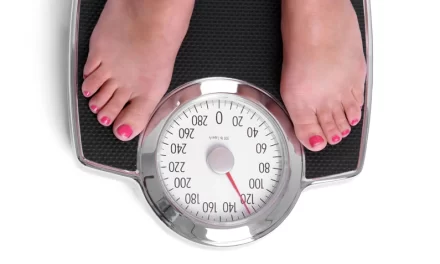
Low Carb vs Keto: What’s the Difference?
When it comes to Western diets, you’re going to find a lot of processed foods, refined grains, and added sugar.
All of these foods contain simple carbohydrates which lead to a spike in sugar levels when broken down. Over time, these spikes can increase insulin resistance and spur the development of obesity, type 2 diabetes, and other chronic diseases.
For those reasons, there has been a growing movement towards low carb and keto diets.
While both diets limit carbohydrate intake, there are some important distinctions between them.
The main difference between low carb and keto is the amount of carbohydrates allowed.
A low carb diet generally restricts carbohydrates to 50-150 grams per day, while a keto diet restricts carbohydrates to fewer than 50 grams per day.
Another difference is the focus on fat.
On a low carb diet, you may eat moderate amounts of fat, but on a keto diet, fat is the main source of energy, making up 70-80% of your daily calories. Protein intake is also typically higher on a low carb diet than on a keto diet.
Key Differences Between Low Carb and Keto Diets
What are the Benefits of a Low Carb vs Keto Diet?
Both low carb and keto diets have been shown to have a number of health benefits, including:
Weight loss: Both diets can be effective for weight loss, especially in the short term. Keto diets may be more effective for weight loss in the short term, but they can also be more difficult to follow long-term.
Improved blood sugar control: Low carb and keto diets can help to improve blood sugar control in people with type 2 diabetes. This is because these diets help to reduce insulin resistance and improve glucose metabolism.
Reduced risk of heart disease: Low carb and keto diets can help to reduce the risk of heart disease by improving cholesterol levels, blood pressure, and blood sugar control.
Reduced inflammation: Low carb and keto diets can help to reduce inflammation throughout the body. This is important because inflammation is linked to a number of chronic diseases, such as heart disease, cancer, and arthritis.
Improved brain function: Low carb and keto diets have been shown to improve brain function in people with Alzheimer’s disease and other forms of dementia.
Reduced risk of cancer: Low carb and keto diets have been shown to reduce the risk of certain types of cancer, such as colorectal cancer and breast cancer.
It is important to note that more research is needed to confirm all of the potential health benefits of low carb and keto diets.
Additionally, these diets may not be appropriate for everyone. It is important to talk to your doctor before starting any new diet, especially if you have any underlying health conditions.
Here are some additional benefits of low carb or keto diets that have been reported by people who follow them:
Increased energy levels
Improved mood
Reduced cravings
Better sleep
Clearer skin
Reduced pain and inflammation
Improved gut health
It is important to note that these results are not guaranteed and may vary from person to person.
Which Diet is Right for You?
Both low carb and keto diets can be effective for weight loss and other health benefits.
However, the keto diet is more restrictive and may not be sustainable for everyone.
If you are new to low carb or keto eating, it is important to start slowly and gradually reduce your carbohydrate intake.
You should also talk to your doctor before starting any new diet, especially if you have any underlying health conditions.
Here are Some Tips for Following a Low Carb or Keto Diet:
- Focus on nutrient-dense foods, such as leafy green vegetables, fatty fish, nuts, and seeds.
- Avoid processed foods, sugary drinks, and grains.
- Drink plenty of water and electrolytes.
- Listen to your body and eat when you are hungry. Stop eating when you are full.
It is also important to note that both low carb and keto diets can cause side effects in some people, such as fatigue, dizziness, and headaches.
These side effects are usually temporary and go away as your body adjusts to the new diet.
Start With Low Carb if You’re a Beginner.
A low carb diet is generally better for beginners than a keto diet. This is because a low carb diet is more flexible and easier to follow. It also has a lower risk of side effects.
On a low carb diet, you can still eat some carbohydrates, such as fruits, vegetables, and whole grains. You just need to limit your intake of processed carbohydrates, such as white bread, pasta, and sugary drinks.
On a keto diet, you need to restrict your carbohydrate intake to 20-50 grams per day. This can be very difficult for beginners, and it can lead to side effects such as fatigue, headache, and nausea.
If you are a beginner, I recommend starting with a low carb diet. Once you have adapted to a low carb diet, you can then decide if you want to try a keto diet.
Here are some tips for getting started on a low carb diet:
Start by making small changes to your diet, such as swapping out white bread for whole-wheat bread or cutting back on sugary drinks.
Focus on eating whole, unprocessed foods.
Make sure to include plenty of protein and healthy fats in your diet.
Drink plenty of water.
Be patient.
It takes time to adapt to a new diet.
If you have any questions or concerns, please talk to your doctor or a registered dietitian.





